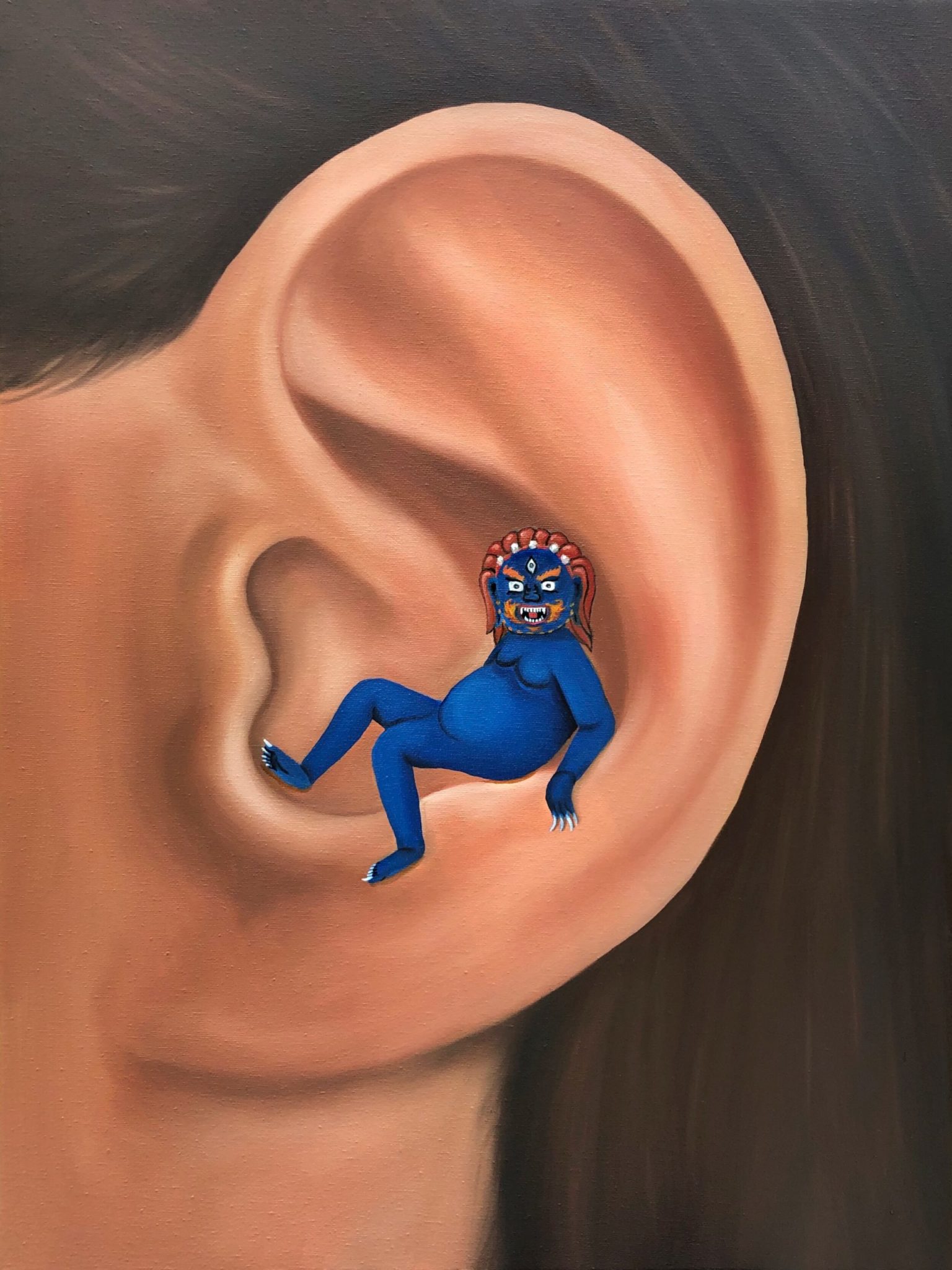

—
A three-eyed, 6-foot, human-crushing demon — painted on my parents’ 18th-century Tibetan scroll — has been the centerpiece of our dining room since the late 1990s. Known as a “wrathful deity,” the demon is a frequent figure in traditional Tibetan art. From the deity mask perched above our front door frame to the painted deity glaring down at me at the dinner table, their wrathful gazes terrified me throughout my childhood.
In high school, I began researching traditional Tibetan art and learned about the true nature of wrathful deities. Despite their fearsome physical appearances, they serve as benevolent protectors. They are wrathful manifestations of peaceful deities who’ve taken on frightening forms of evil in an effort to scare away evil itself.
This year, as external demons seem to run rampant all around us, I felt compelled to make a painting honoring the wrathful deity symbol. “Wrath” is a self-portrait of me taking off a wrathful deity mask. Removing the mask one hides behind is about courage and the choice to confront evil directly. More than that, I see this painting as a form of self-reflection. If wrathful deities wear the face of evil to scare away evil, this painting reveals that the true face of evil is sometimes one’s own. At a time when there’s so much we can’t control, we can always start by addressing inner demons.
In “He Told Me to Do It,” I wanted to paint a closer examination of “Wrath,” zooming into the hidden ear behind my mask to find a tiny wrathful deity chilling inside. I interpret the deity in my ear as a symbolic guiding force, whispering words of encouragement and protection.







